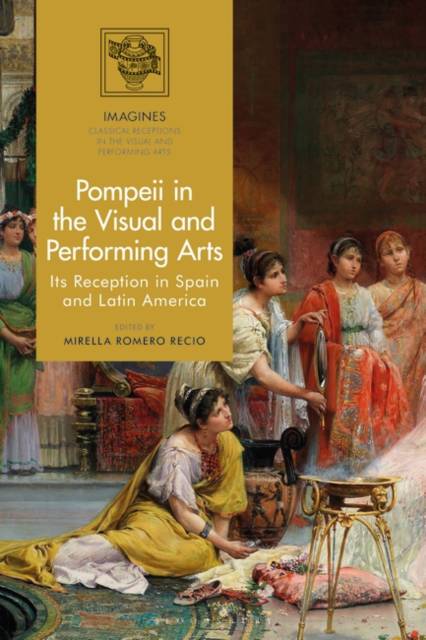
- Retrait gratuit dans votre magasin Club
- 7.000.000 titres dans notre catalogue
- Payer en toute sécurité
- Toujours un magasin près de chez vous
- Retrait gratuit dans votre magasin Club
- 7.000.0000 titres dans notre catalogue
- Payer en toute sécurité
- Toujours un magasin près de chez vous
Pompeii in the Visual and Performing Arts
Its Reception in Spain and Latin America
220,45 €
+ 440 points
Description
This volume examines the influence that Pompeii and, to a lesser extent, Herculaneum had on the visual and performing arts in Spain and countries across South America. Covering topics from architecture, painting and decorative arts to theatre, dance and photography, the reader will gain insight into the reception of classical antiquity through the analysis of the close cultural ties between both sides of the Atlantic, in the past and the present. Each contribution has been written by a specialist researcher participating in the project, 'The Reception and Influence of Pompeii and Herculaneum in Spain and Ibero-America', funded by the Spanish Ministry of Science and Innovation (PGC2018-093509-B-I00 Ministry of Science and Innovation/AEI/ERDF/EU).
Pompeii in the Visual and Performing Arts begins by examining the influence of Pompeiian architecture in Spain in paintings that depict scenes inspired by Roman scenes and also buildings modelled on those of Pompeii. Next, the influence of Pompeii crosses the Atlantic to Mexico with a study of the archaeological site's influence on the visual and performing arts. An exploration of the elitist use of the ancient past in architecture is seen in Chilean architecture, which leads onto an investigation of the new art styles that emerged in the 19th century. Later chapters look into the influence of the ancient frescoes and the use of modern plaster casts of statues. The final chapters are devoted to comics and photography, which also make a study of the places in Latin America nicknamed 'Pompeii' in the 20th and 21st centuries.
Pompeii in the Visual and Performing Arts begins by examining the influence of Pompeiian architecture in Spain in paintings that depict scenes inspired by Roman scenes and also buildings modelled on those of Pompeii. Next, the influence of Pompeii crosses the Atlantic to Mexico with a study of the archaeological site's influence on the visual and performing arts. An exploration of the elitist use of the ancient past in architecture is seen in Chilean architecture, which leads onto an investigation of the new art styles that emerged in the 19th century. Later chapters look into the influence of the ancient frescoes and the use of modern plaster casts of statues. The final chapters are devoted to comics and photography, which also make a study of the places in Latin America nicknamed 'Pompeii' in the 20th and 21st centuries.
Spécifications
Parties prenantes
- Editeur:
Contenu
- Nombre de pages :
- 256
- Langue:
- Anglais
- Collection :
Caractéristiques
- EAN:
- 9781350277885
- Date de parution :
- 15-06-23
- Format:
- Livre relié
- Format numérique:
- Genaaid
- Dimensions :
- 156 mm x 234 mm
- Poids :
- 530 g

Les avis
Nous publions uniquement les avis qui respectent les conditions requises. Consultez nos conditions pour les avis.





